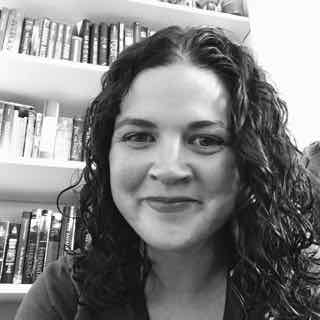
It's All Too Much: An Easy Plan for Living a Richer Life with Less Stuff
by Peter Walsh
Published: December 12, 2006
Genres: Self Help
Format: Hardcover (230 pages)
Source: Library
morePeter Walsh, the organizational guru from TLC's hit show Clean Sweep, understands how easy it is for clutter to creep into your life and how hard it is to get rid of it. In It's All Too Much, he shares his proven system for letting go of your emotional and physical clutter so that you ...
Short and Sweet Version
It’s All Too Much was so much more than just a really long pep talk about getting rid of your stuff. It’s full of great ideas about everything from paperwork to kitchen cabinets to basements. Peter takes the overwhelming task of organizing your entire house and breaks it down into manageable steps with a process to easily maintain and it keep it that way.
Jessica Thinks Too Much Version
I love how personal and customizable this book is. Instead of diving right into a lecture on why you should organize your stuff, Peter Walsh starts out in a surprising way. He has you take a quiz about what you want in your ideal home (there’s also a hilarious quiz about how much of a hoarder you are). I had a blast making a long list of what my dream home would be like. My list was full of things like: colorful, smells nice, clean, can find things easily, and relaxing. Because of this approach, it made me more open to the ideas he had. Now I had this image in my head of what I wanted and I knew this process was going to get it for me. Plus, who doesn’t love quizzes about themselves?
I loved this whole book. I took 10 pages of notes. I’ve recommended it to everyone I know. But I’ll share the things that resonated the most with me.
Organizing isn’t really about the “stuff.” Like most people in my generation, I had grandparents who lived during the Great Depression and stuff was hoarded for good reason. This was passed down to my parents and it was instilled in me. But unlike the time of my grandparents when even hoarding everything you could find still left you wanting, hoarding now creates an excess of stuff that is ultimately making me unhappy. The amount of stuff you had used to be limited by money but since everything is much cheaper now, it has to have a different limit. That limit has to be the size of your house. Until reading this book, I hadn’t realized that I even was hoarding. I like minimalism. I don’t like knick-knacks. But when he pointed out that we can’t keep adding to our stuff without ever subtracting, I realized that I buy and buy but never get rid of anything.
Even though this was something I knew, I still liked his discussion about value vs. cost. Cost and value aren’t the same thing. Just because something was expensive doesn’t mean it is adding value to your home. See also the broken $2000 TV sitting in my basement that no longer works. Maybe we could fix it someday but most likely not. Maybe the TV example is too obvious. But what about the expensive bike I hardly ride? Or the books taking up room on my shelf that I don’t like?
Peter says that most people make quick decisions about where things go the day they move in and never change it. They never question if things function where they are or make thoughtful decisions about where to put things. He’s so right! I did that! I think this is most true in the kitchen. It’s the first thing I set up because I … um….food and I just hurried and shoved things in cabinets. Then I got so used to where things were that even changing one drawer was annoying. I’ve rearranged my kitchen a few times since reading this and it is so annoying to open three drawers before you remember where something actually is. I thought I needed more furniture in my kitchen, but after decluttering and rearranging I realized I didn’t.
The room function chart in this book is simple yet genius. He just asks you to go through each room and ask what it’s current function is, what it’s ideal function is, who uses it, and what needs to leave the room. For some reason I never looked at my rooms this simply and logically. I transformed my mud room because of this chart. I have a closet in there as well as coat hooks on the wall. Since I didn’t need the closet for coats, it seemed obvious that I would use the closet as a broom closet. But when I went through the functions of the mudroom I realized I wanted it to be a place to grab everything you need before leaving and put everything back when you come in the door. Having my brooms in there didn’t make sense especially when all the diaper bags, church bags, school bags, library bags, and work bags were on the bench/floor/everywhere and you couldn’t move in there. It was only obvious after going through this chart that I should stick all those bags in that closet. My mudroom is gorgeous and clutter free now. (I stuck all my brooms in my laundry room in case you’re wondering.)
He goes through common problems for each room in the house. Having stories about how people struggled with a certain area and then fixed it made me feel normal. I loved the stories from people’s lives because even though they didn’t always apply to me, they did give me ideas about what to do with each of my rooms.
I know that all organizing books essentially say the same thing, but I loved Peter Walsh’s approach. It’s personal yet logical and easy to use. He’s funny, likable, and has great ideas. I could tell he was passionate about what he does and it rubbed off on me a little bit. It’s made me motivated to get rid of stuff and I’m much happier because of it.
Content Rating: None. Clean read.
This post contains affiliate links and I receive a small percentage of sales made through these links.









 My name is Jessica. I love to read Young Adult and classic literature. I’ve been a book blogger for six years and I haven’t gotten tired of it yet. I’m a very curious reader. Writing about all the questions and thoughts I had while reading a book is the best hobby ever.
My name is Jessica. I love to read Young Adult and classic literature. I’ve been a book blogger for six years and I haven’t gotten tired of it yet. I’m a very curious reader. Writing about all the questions and thoughts I had while reading a book is the best hobby ever.
I totally could use this book… more importantly my husband could use it. Does it talk about sentiment? Because my husband is sentimental about everything!
Oh my gosh yes! I think he has the best advice on sentimental clutter. He is honest and logical about it. His approach is you either use it, have it in a place of honor or get rid of it. The box of grandmas blankets rotting in the garage is not honoring or using it – has to go.
I have a great talent for organizing. I love to do it. No matter how tedious the task, I find it enjoying. I think I’d love this book!
I love Peter Walsh. He was my favorite part of Clean Sweep :) This book is great, too. Full of so much good, practical advice for reducing clutter. Glad you found it helpful and enjoyable!
Haha you took 10 pages of notes!! Actually, I laugh but I’m pretty sure I would approach this one the same way as you. Over the years, I’ve come to really appreciate keeping things simple, getting rid of the knick-knacks, etc. I love the feeling of purging all that stuff you never used and will never need and the result is a clean, simple, relaxed home!